Abstract
A computer simulation model was used to predict the dynamics of survival and conjugation of Pseudomonas cepacia (carrying the transmissible recombinant plasmid R388:Tn1721) with a nonrecombinant recipient strain in simple rhizosphere and phyllosphere microcosms. Plasmid transfer rates were derived for a mass action model, and donor and recipient survival were modeled as exponential growth and decay processes or both. Rate parameters were derived from laboratory studies in which donor and recipient strains were incubated in test tubes with a peat-vermiculite solution or on excised radish or bean leaves in petri dishes. The model predicted donor, recipient, and transconjugant populations in hourly time steps. It was tested in a microcosm planted with radish seeds and inoculated with donor and recipient strains and on leaf surfaces of radish and bean plants also growing in microcosms. Bacteria were periodically enumerated on selective media over 7 to 14 days. When donor and recipient populations were 10(6) to 10(8) CFU/g (wet weight) of plant or soil, transconjugant populations of about 10(1) to 10(4) were observed after 1 day. An initial rapid increase and a subsequent decline in numbers of transconjugants in the rhizosphere and on leaf surfaces were correctly predicted.
Full text
PDF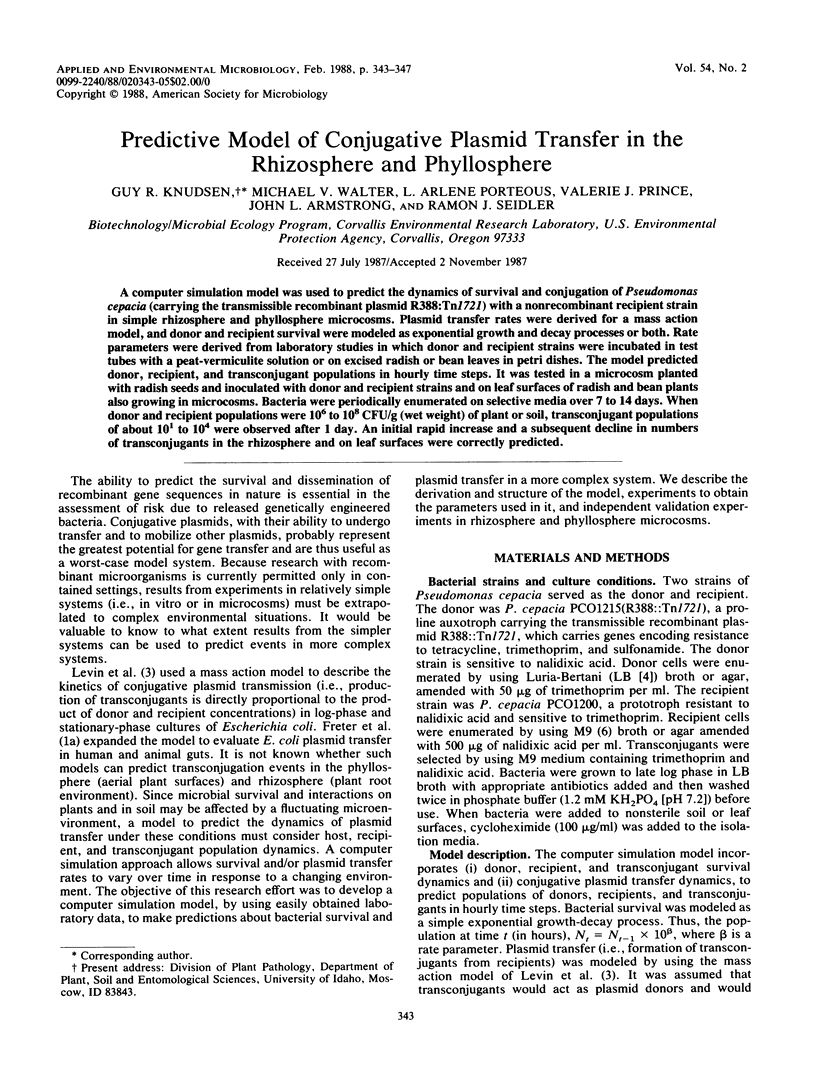
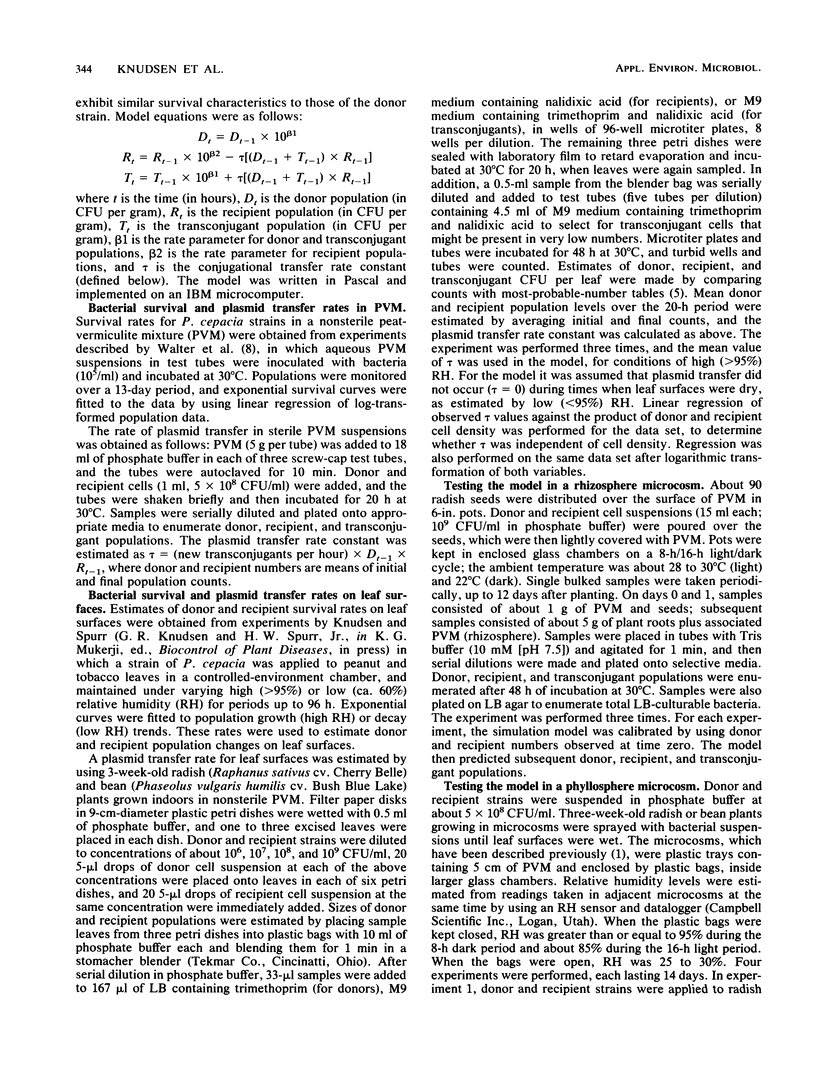
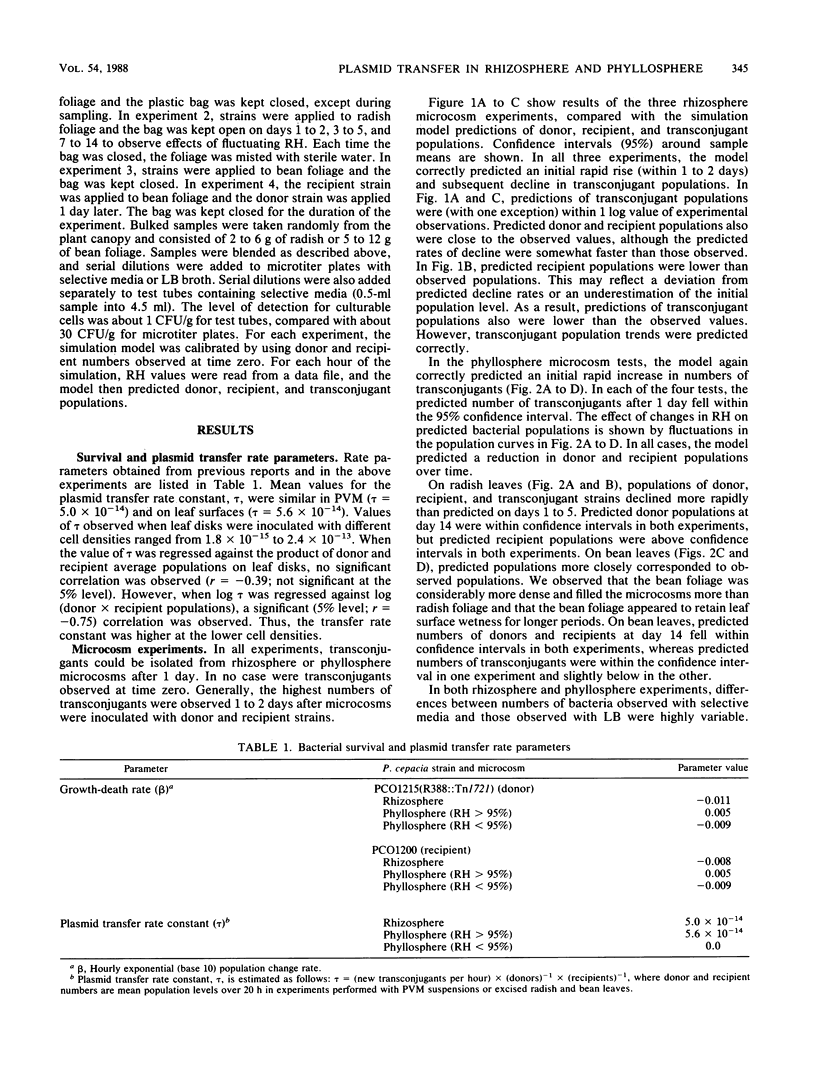
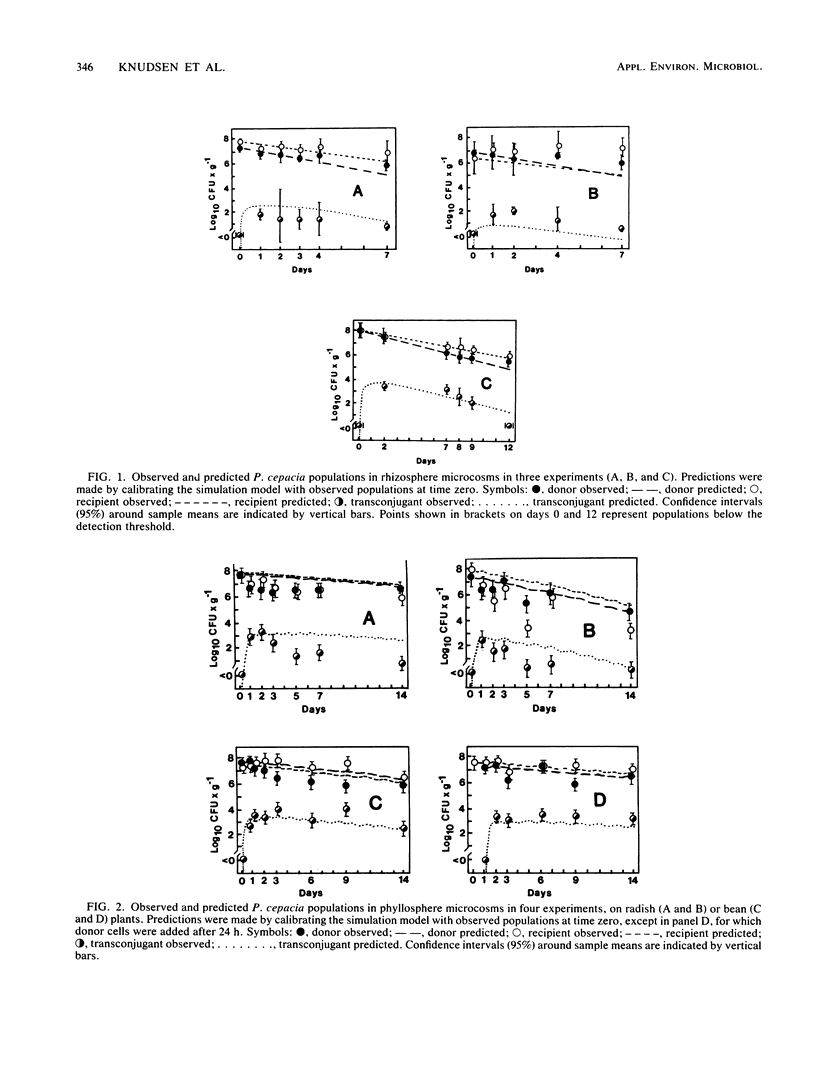
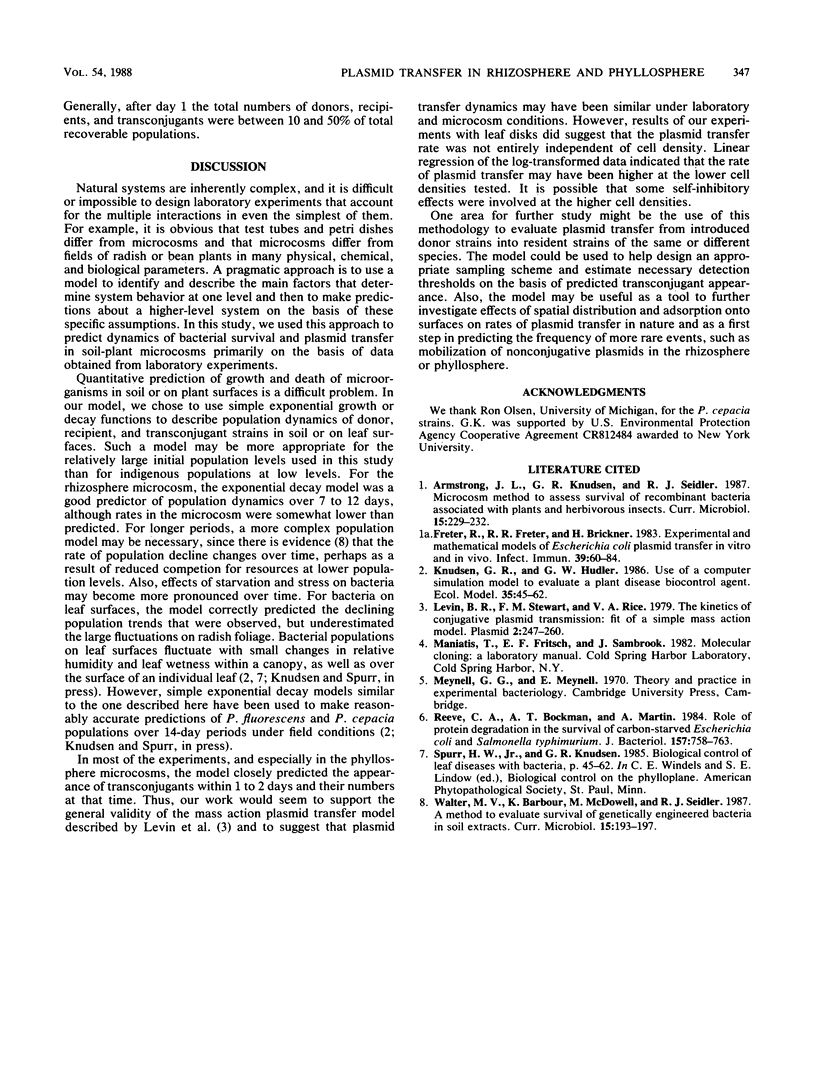
Selected References
These references are in PubMed. This may not be the complete list of references from this article.
- Freter R., Freter R. R., Brickner H. Experimental and mathematical models of Escherichia coli plasmid transfer in vitro and in vivo. Infect Immun. 1983 Jan;39(1):60–84. doi: 10.1128/iai.39.1.60-84.1983. [DOI] [PMC free article] [PubMed] [Google Scholar]
- Levin B. R., Stewart F. M., Rice V. A. The kinetics of conjugative plasmid transmission: fit of a simple mass action model. Plasmid. 1979 Apr;2(2):247–260. doi: 10.1016/0147-619x(79)90043-x. [DOI] [PubMed] [Google Scholar]
- Reeve C. A., Bockman A. T., Matin A. Role of protein degradation in the survival of carbon-starved Escherichia coli and Salmonella typhimurium. J Bacteriol. 1984 Mar;157(3):758–763. doi: 10.1128/jb.157.3.758-763.1984. [DOI] [PMC free article] [PubMed] [Google Scholar]


